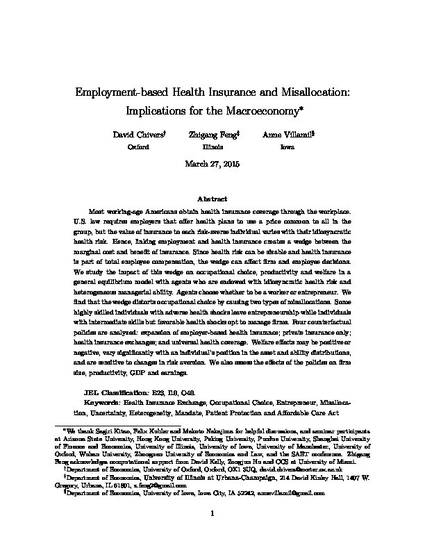
Most working-age Americans obtain health insurance through the workplace. U.S. law requires employers to use a common price, but the value of insurance varies with idiosyncratic health risk. Hence, linking employment and health insurance creates a wedge between the marginal cost and benefit of insurance. We study the impact of this wedge on occupational choice and welfare in a general equilibrium model. Agents face idiosyncratic health expenditure shocks, have heterogeneous managerial and worker productivity, and choose whether to be workers or entrepreneurs. First, we consider a private insurance indemnity policy that removes the link between employment and health insurance, so only ability matters for occupational choice. By construction, this is the most efficient policy. We find a welfare gain of 2.28% from decoupling health insurance and employment. Second, we tighten the link by increasing employment-based health insurance from the current U.S. level of 62% to 100%, and find a welfare loss of – 0.61%.
Available at: http://works.bepress.com/zhigang-feng/3/
